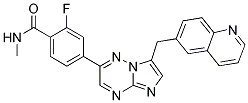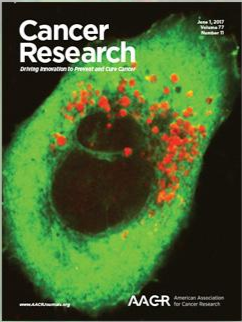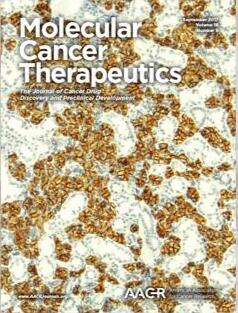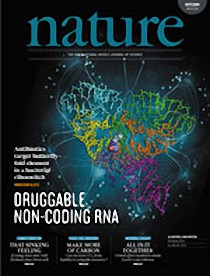All AbMole products are for research use only, cannot be used for human consumption.

Capmatinib (INCB28060) is a potent, orally available selective inhibitor of the c-MET receptor tyrosine kinase, a clinically validated cancer target. Capmatinib (INCB28060) exhibits picomolar enzymatic potency and is highly specific for c-MET with more than 10,000-fold selectivity over a large panel of human kinases. INCB28060 potently blocks c-MET phosphorylation and activation of its key downstream effectors in c-MET-dependent tumor cell lines. Capmatinib (INCB28060) potently inhibits c-MET-dependent tumor cell proliferation and migration and effectively induces apoptosis in vitro. Oral dosing of INCB28060 results in time- and dose-dependent inhibition of c-MET phosphorylation and tumor growth in c-MET-driven mouse tumor models, and INCB28060 is well tolerated at doses that achieve complete tumor inhibition.

Cancer Res. 2017 Jan 1;77(1):41-52.
Heterogeneous Stromal Signaling within the Tumor Microenvironment Controls the Metastasis of Pancreatic Cancer
Capmatinib (INCB28060) purchased from AbMole

Mol Cancer Ther. 2017 Nov;16(11):2399-2409.
Dual inhibition of Hedgehog and c-Met pathways for pancreatic cancer treatment
Capmatinib (INCB28060) purchased from AbMole

Nature. 2015 Jun 18;522(7556):349-53.
MET is required for the recruitment of anti-tumoural neutrophils.
Capmatinib (INCB28060) purchased from AbMole
| Cell Experiment | |
|---|---|
| Cell lines | SUN-5 and SUN-1 cells |
| Preparation method | Optimal cell density used in the viability assay was predetermined for individual cell lines. To determine compound potency, cells were seeded into 96-well microplates at the appropriate density in media containing 1% to 2% FBS and supplemented with serial dilutions of INCB28060 in a final volume of 100 μL per well. After 72-hour incubation, 24 μL of CellTiter 96 AQueous One Solution (Promega) was added to each well, and the plates were incubated for 2 hours in a 37°C incubator. The optical density was measured in the linear range using a microplate reader at 490 nm with wavelength correction at 650 nm. IC50 values were calculated using the GraphPad Prism Software. |
| Concentrations | 0~333 nM |
| Incubation time | 3 days |
| Animal Experiment | |
|---|---|
| Animal models | B16F10 tumour-bearing mice |
| Formulation | 0.5% methylcellulose in saline |
| Dosages | 50mg/kg INCB28060 |
| Administration | via oral gavage every day once a day starting from day 2 after tumour injection and twice a day from day 11 until the end of the experiment(2 weeks) |
| Molecular Weight | 412.42 |
| Formula | C23H17FN6O |
| CAS Number | 1029712-80-8 |
| Solubility (25°C) | DMSO 15 mg/mL |
| Storage |
Powder -20°C 3 years ; 4°C 2 years In solvent -80°C 6 months ; -20°C 1 month |
| Related c-Met Products |
|---|
| BMS-817378
BMS-817378 is a potent and selective inhibitor of MET with IC50 of 1.7 nM. |
| Capmatinib dihydrochloride hydrate
Capmatinib dihydrochloride hydrate is a potent, orally active, selective, ATP-competitive c-Met kinase inhibitor (IC50=0.13 nM) that inhibits the phosphorylation of c-MET, as well as downstream effector proteins of the c-MET pathway, such as ERK1/2, AKT, FAK, In addition, Capmatinib dihydrochloride hydrate effectively inhibited the proliferation and migration of c-Met-dependent tumor cells, induced apoptosis, and demonstrated antitumor activity in a mouse model of tumor. Capmatinib dihydrochloride hydrate is mainly metabolized by CYP3A4 and aldehyde oxidase. |
| Caveolin-1 (82-101) amide (human, mouse, rat)
Caveolin-1 (82-101) amide (human, mouse, rat) (Caveolin-1 scaffolding domain peptide) is a peptide that reverses aging-associated deleterious changes in multiple organs. |
| Norleual
Norleual, an angiotensin (Ang) IV analog, is a hepatocyte growth factor (HGF)/c-Met inhibitor with an IC50 of 3 pM. |
| Fosgonimeton
Fosgonimeton is a potentially first-in-class Hepatocyte Growth Factor Receptor (HGF) agonist that enhances HGF/MET signaling pathway activity for Alzheimer's Disease (AD) research. |
All AbMole products are for research use only, cannot be used for human consumption or veterinary use. We do not provide products or services to individuals. Please comply with the intended use and do not use AbMole products for any other purpose.


Products are for research use only. Not for human use. We do not sell to patients.
© Copyright 2010-2024 AbMole BioScience. All Rights Reserved.
